Sophisticated and bespoke restaurant interiors should not cost an arm and leg. Nowadays, restaurant building or renovation may cost from $200,000 to $1 million depending on the interiors’ theme, aesthetics, and complexity. However, with diligence and perseverance to sweep flea markets and collaborate with artists, a lush revamp for your store can be doable.
Managing costs, creative juices, and a make-do attitude is the end-all and be-all for a renovation project. A fresh coat of paint, an accent piece that showcases the restaurant brand identity, outdated equipment replacement, indoor plants, and classy centerpieces can transform any drab space into something out of a Pinterest interior design board. These examples are cost-efficient practices and DIY projects that can create a significant impact without breaking the bank. Ultimately, the goal is to veer away from contractors and maximize doing everything yourself to cut professional fees and installation costs.
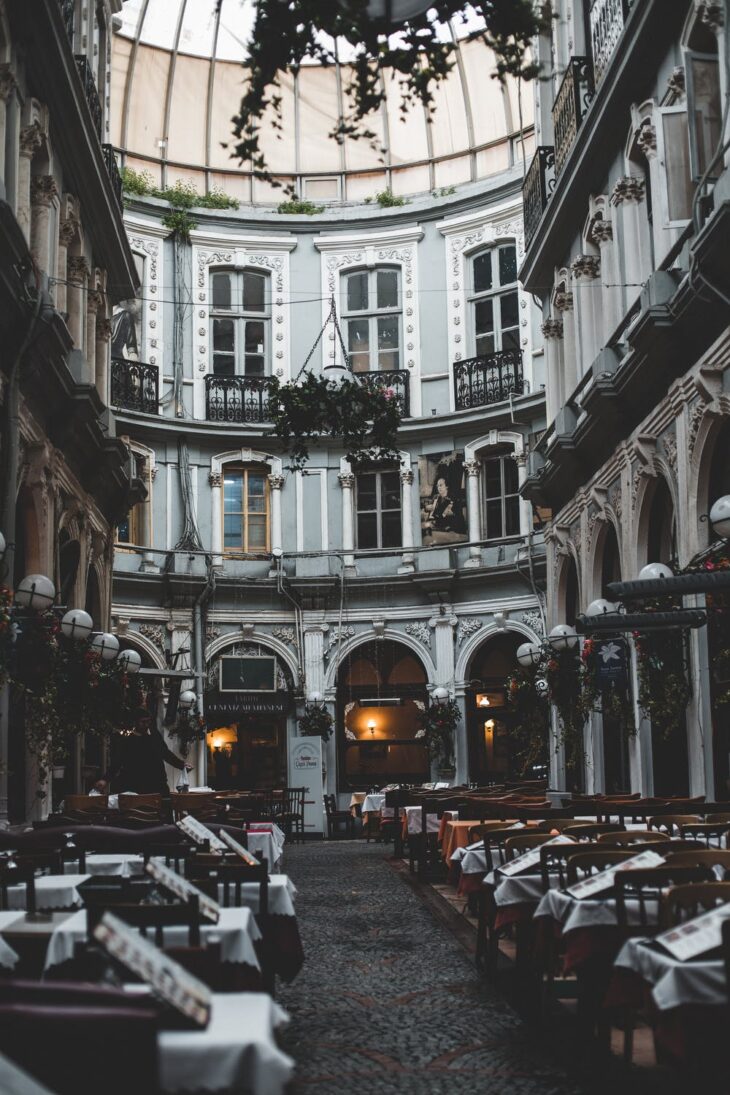
Source: pexels.com
It is a fact that not everyone has an eye for style. However, with the birth of Pinterest boards, online design guides, masterclasses, and interior apps, it is nearly impossible not to develop renovation design ideas and pegs. Start by making everything straightforward with clean lines, a neutral palette, and classic textures. Then, start accessorizing or identifying accent pieces and possible murals in the space.
In this article, we will deep dive into DIY and budget-friendly restaurant interior design ideas. These décor pegs can save an entrepreneur a significant amount of money. Of course, these projects would entail time and effort for research and building a concept deck. However, attention to detail is a non-negotiable in keeping costs at bay. In this day and age, décor with functionality are the vital elements of restaurant design. For example, a restaurant in New York City used an old grand piano as book shelving.
With this, architectural details are combined with functionality and design. In addition, this accent piece and conversation starter elevate the customer experience by establishing a cozy ambiance with good food and drinks with the restaurant theme at front and center.
Contents
1. First impression lasts
Create a lasting impression by setting the stage for an unforgettable dining experience by integrating creative and one-of-a-kind elements at the entrance door. For example, some popular restaurants in Barcelona utilize carved, massive, recycled double doors. In this way, they created that extra oomph with the door by installing an antique brass doorknob. Scrap metal facilities collect nickel, copper, brass components, and even doorknobs. Aside from an impressive door, stunning signage can also create a significant impact. Likewise, an elegant host station can make a guest feel welcome. For example, a café in Sydney showcases a host stand with a bicycle as its stand. The café is a pit stop for bikers and tourists in the area. In this way, the welcoming elements are blended with the central theme of the store. Check out langleyrecyclingkc.com for possible materials that you can convert into impressive items.
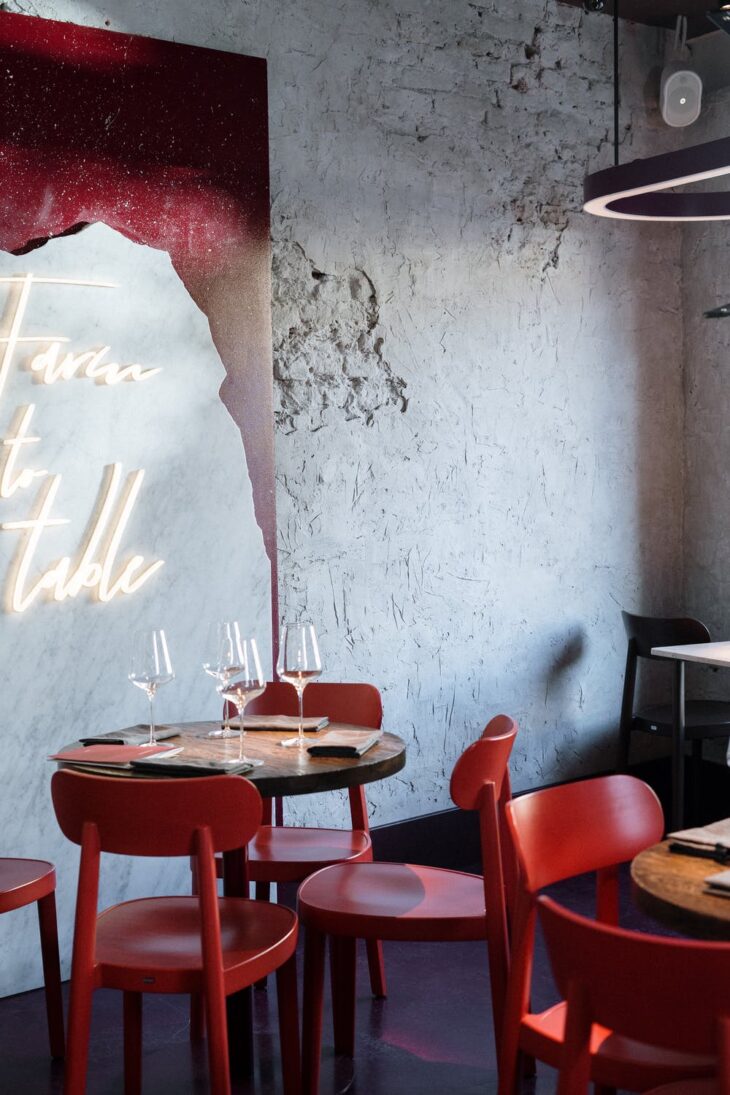
Source: pexels.com
2. Collaborate with local artists
Transform your restaurant space into an art haven for artists in the area. In this way, the shop’s mural can be a dynamic design space by featuring different artists weekly or monthly. It can significantly cut design installation costs likewise support the community by promoting lesser-known artists.
3. Unique seating options
Veer away from the typical stools, booths, and new chairs. Furthermore, explore alternative seating options by utilizing cost-efficient art deco chairs. Scour flea markets, antique shops, and designer arcades for repurposed chairs. For example, a bistro in Amalfi, Italy, integrated mismatched armchairs into their furniture mix. Owners even add a fresh coat of paint to existing wooden chairs by playing with turquoise colors and earth tones. With this, the shop is revitalized with a warm, trendy, and cozy feel.
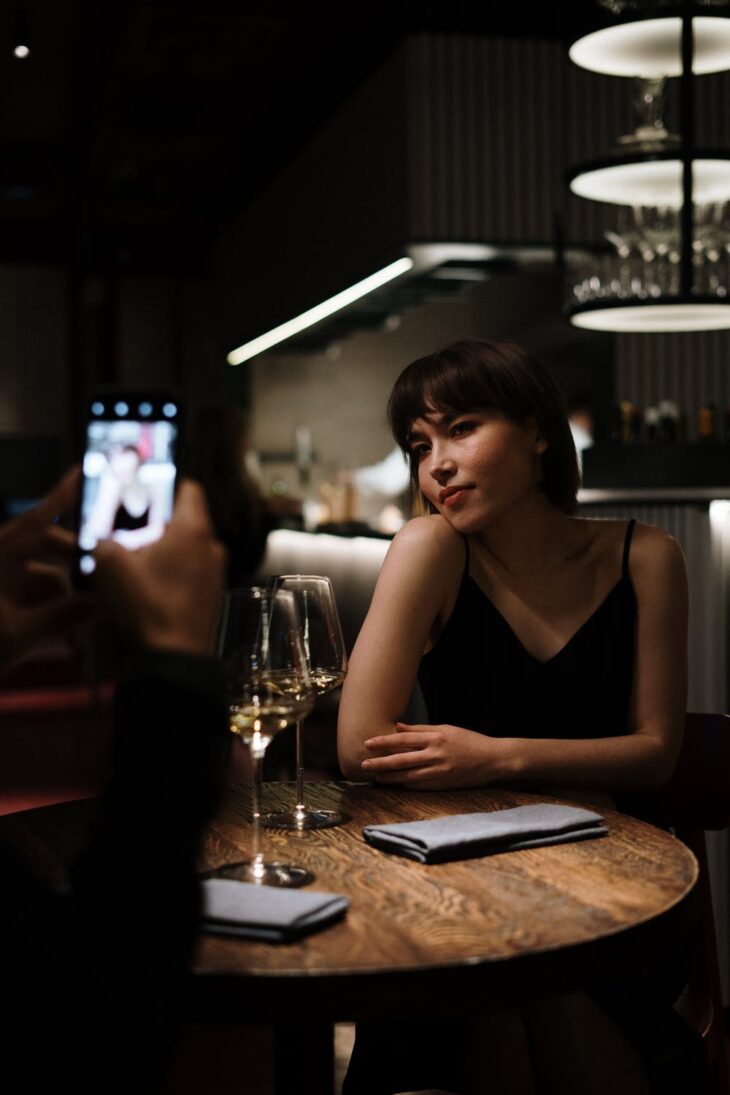
Source: pexels.com
4. Communal dining experience
In light of the post-pandemic times, everybody is itching to connect and gather together. Increase the seating capacity of your restaurant and at the same time encourage group dining through large communal tables. Integrate fun cards, boards, and trivia games to inspire interaction amongst guests. Explore communal tables with downcycled components. These materials can easily cut costs in half, likewise double their aesthetic quality.
5. Highlight the restaurant location
Capitalize on the location of the shop by highlighting the unique elements and history of the town. Integrate upcycled products like an old guitar as a flowerpot, school desks as a host stand, antique maps printed as wallpapers, and hometown trinkets as a chandelier. Rummage through flea markets for quilts turned into tablecloths. Keep your creative juices running because possibilities are endless when you combine art, design, and history.
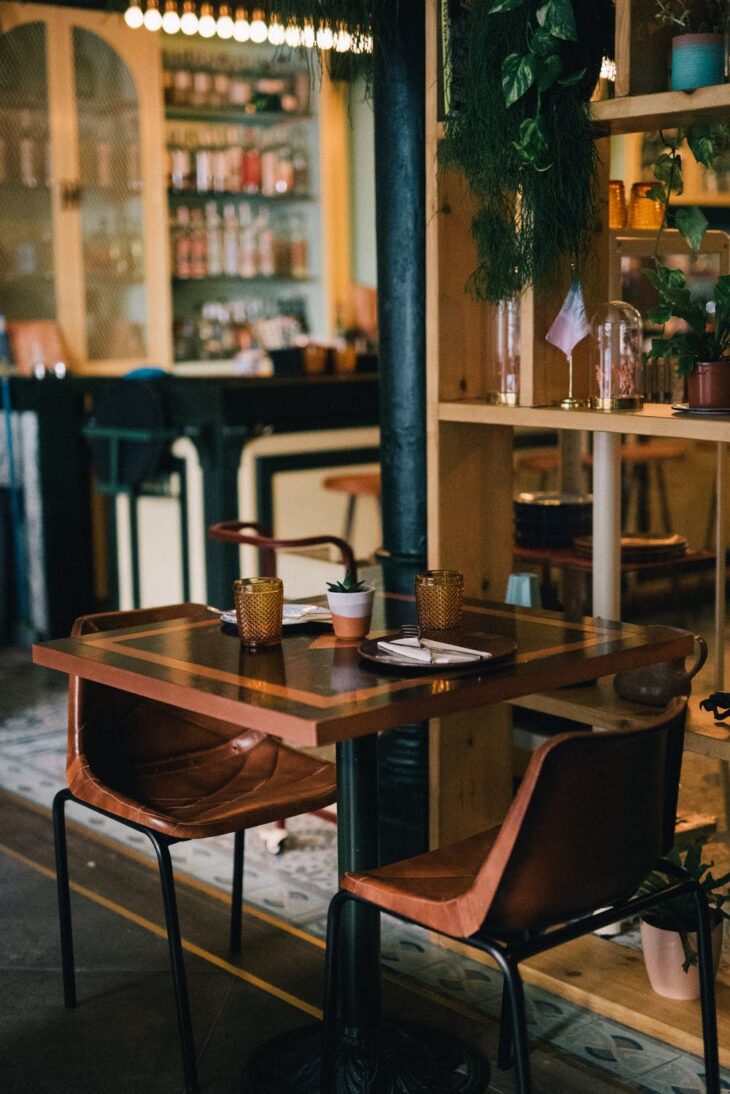
Source: pexels.com
6. Revamp the bar
Frequently, the bar is the focal point of a restaurant. Likewise, it is the rendezvous spot as it also serves as a waiting area for the guests. Invest time and energy to build a design peg that captures your brand identity. For example, a bespoke prohibition bar in Manila utilizes black flowers and napkins with a mirror countertop to be cohesive with its dark, ominous, and gothic theme. Be creative with cost-efficient elements through comfortable seating, energetic lighting, dynamic signage, or luxuriant succulents.
7. Be creative on lighting
Swap out mundane lighting fixtures with modern chandeliers, voluminous scones, and sophisticated pendants. These fixtures are a great way to enhance a mood, create an ambiance, and elevate a space. With help from a licensed technician, DIY lighting schemes are easy to carry out and a bang for your buck in upgrading your restaurant interiors. But, most importantly, the lighting must be Instagram-friendly that complements the food and drinks. Nowadays, social media is a powerful tool in marketing and advertising. So, make sure we ace and cover this aspect.
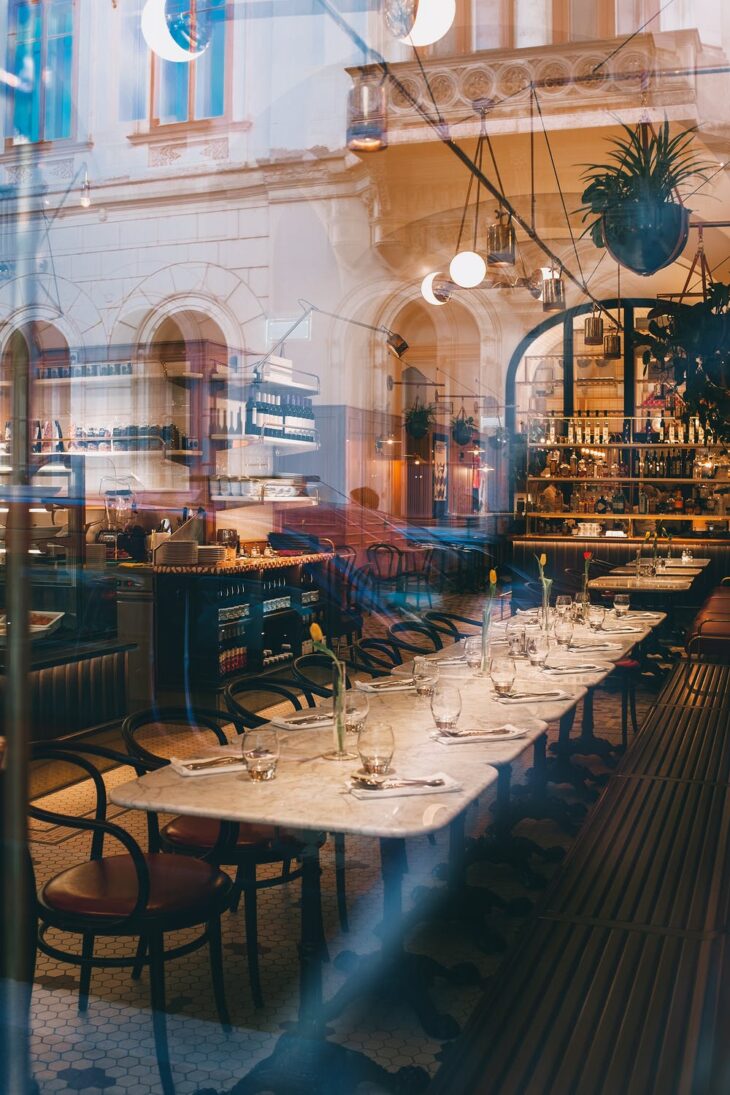
Source: pexels.com
8. Work with outdoor elements
Bring in outside elements such as flowers and plants into the indoor mix. Typically, flora and greenery are a staple in restaurant décor because they can instantly elevate the restaurant space’s mood, ambiance, and overall look. Nowadays, sunroofs, vertical gardens, flower fountains, and living walls are major design trends in the restaurant scene. Aside from its visual impact, greenery improves air quality.
Ultimately, these budget-friendly design ideas can be implemented individually likewise executed together in the different spaces of the restaurant. However, as a restaurateur, it is best to look at all design elements from the patron’s point of view and make sure that the design principles and elements are cohesive with your brand identity.
